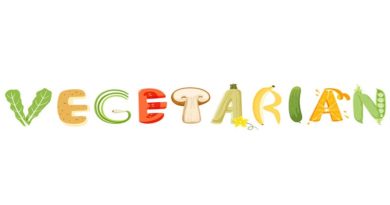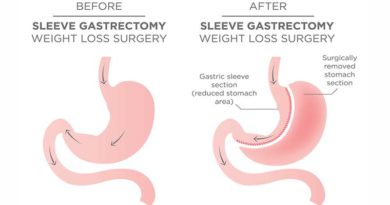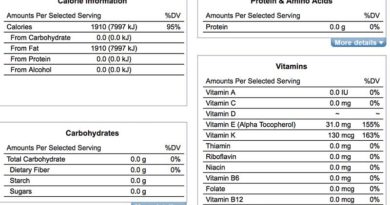We cannot eat less sugar & more carbohydrate
Introduction
The World Health Organisation announced that “sugars should be less than 10% of total energy intake per day.” It further advised that “a reduction to below 5% of total energy intake per day would have additional benefits.”[i]
This announcement follows much “Action on Sugar” in 2014 – this being the name of a new organisation launched on 9th January 2014, with the stated aim of targeting added sugar.[ii] Dr Robert Lustig has been telling us “The bitter truth about sugar.”[iii] Dr Assem Malhotra called for the dietary advice on sugar to undergo emergency surgery.[iv] James DiNicolantonio suggests that “the metabolic syndrome is being driven by a diet high in carbohydrate/sugar as opposed to fat.[v]
“The term ‘free sugars’ refers to all monosaccharides and disaccharides added to foods by the manufacturer, cook or consumer, plus sugars naturally present in honey, syrups and fruit juices.”[vi]
The Department of Health Dietary Reference Values remains the basis for UK dietary advice.[vii] It has not been updated in the past 22 years, despite epidemics of obesity and type 2 diabetes having developed in this time. This document recommends that “the population’s average intake of non-milk extrinsic sugars [free sugars] should not exceed about 60 g/day or 10 per cent of total dietary energy.”
Guideline Daily Amounts
In 1996, the Ministry of Agriculture Fisheries and Food (MAFF) published a leaflet to help consumers judge the nutrients in food, in relation to the Daily Guideline Intakes (DGIs).[viii] In 1998, the DGIs became Guideline Daily Amounts (GDAs) – set by a collaboration of UK government, consumer organisations and the food industry, overseen by the Institute of Grocery Distribution (IGD).
The summary table for GDAs for adults is as follows:
| Table 1 |
Women |
Calories (% of daily intake) |
Men |
Calories (% of daily intake) |
| Calories |
2,000 kcal |
2,500 kcal |
1,800 kcal |
|
| Protein (grams) |
45 |
180 (9%) |
55 |
220 (9%) |
| Fat (g) |
70 |
630 (32%) |
95 |
855 (34%) |
| Carbohydrate (g) |
230 |
920 (46%) |
300 |
1,200 (48%) |
| Sugars (g) |
90 |
360 (18%) |
120 |
480 (19%) |
| Fibre (g) |
24 |
96 (4.8%) |
24 |
96 (4.8%) |
| Total |
1,730 (87%) |
2,275 (91%) |
This raises some interesting points:
First, GDAs for macronutrients don’t add up. With protein and carbohydrate approximating to four calories per gram and fat approximating to nine, women would consume 1,730 calories per day and men 2,275 if macronutrient recommendations were followed.
Second, the sugar GDA and Dietary Reference Value (DRV) invite confusion. The DRV sets a maximum of 10% of dietary energy for non-milk extrinsic sugars. The GDA can include milk sugar, but we should note how a maximum of 10% has become 18% for women and 19% for men because of the next point…
Third, the food industry treats the sugar GDA as the target for added sugars – those free sugars that experts want to curtail.[ix] It is, in fact, the maximum for total sugars, which brings us to the final and most important point…
Sugars are supposed to be total sugars. A food label for bread informs us that a 40 gram slice has 15 grams of carbohydrate, of which 1.6 grams is listed as sugars.[x] The rest is starch, but this highlights a serious error in our understanding of carbohydrates and sugars.
The big issue
Carbohydrates are, or break down into: monosaccharides (glucose, fructose, galactose); disaccharides (sucrose, lactose, maltose); or polysaccharides (digestible starch or indigestible fibre, insoluble or soluble).
When the food label tells us that there are 15 grams of carbohydrate in bread and 1.6 grams of these are sugar, that will be the “caramelised sugar” listed in the ingredients of this processed product. The remaining 13.4 grams of carbohydrate are also sugar – whether mono, di or poly saccharides. There are 2.7 grams of fibre in the slice of bread (a polysaccharide). Arguably (and there is much debate on this point), this can be ignored, as it is deemed indigestible to the body. This still leaves 10.7 grams of carbohydrate in this one slice of bread, which will break down into sugar in the body. In the case of bread, this will largely break down into glucose – the sugar that goes into the blood stream causing the body to release insulin to return blood glucose levels to a safe range.
The GDAs advise an adult female to have 90 grams of total sugar. The same average woman is told to have 230 grams of carbohydrate, which breaks down into sugars. Even if we generously disregard fibre, this still leaves 206 grams of carbohydrate recommended for consumption on a daily basis. That’s 824 calories of sugars – not the 360 envisaged. To the body, sugar from sucrose (fructose and glucose) or sugar from fruit (fructose and glucose) is still sugar. One comes with vitamins and minerals, the other doesn’t, but the sugar is sugar.
The conflict in advice
In the most recent Food Agricultural Organisation/ World Health Organisation review, recommendations for carbohydrate intake being 55-75% were discussed.[xi] The NHS ‘eatwell’ plate advises an intake of 33% bread, rice, potatoes, pasta and other starchy foods (glucose); 33% fruit and vegetables (fructose/glucose); 15% milk and dairy foods (lactose); 12% non-dairy protein (beans and pulses are sugar/protein combinations); and 8% foods and drinks high in fat and/or sugar (sucrose).[xii]
While the World Health Organisation is consulting on the proposal that sugar consumption should be no more than 5% of total calories, they are overlooking the fact that people are simultaneously being advised to have at least 55% of their food intake in the form of sugars.
References
[i] http://www.who.int/mediacentre/news/notes/2014/consultation-sugar-guideline/en/
[ii] http://www.actiononsalt.org.uk/actiononsugar/Press%20Release%20/118440.html
[iii] Lustig R. Fat Chance: The bitter truth about sugar. Fourth Estate, 2013.
[iv] Malhotra A. The dietary advice on added sugar needs emergency surgery. BMJ 2013;346 doi: 10.1136/bmj.f3199[published Online First: Epub Date]|.
[v] DiNicolantonio JJ. The cardiometabolic consequences of replacing saturated fats with carbohydrates or Ω-6 polyunsaturated fats: Do the dietary guidelines have it wrong? Open Heart 2014;1(1) doi: 10.1136/openhrt-2013-000032[published Online First: Epub Date]|.
[vi] Joint WHO/FAO Expert Consultation, 2003, “WHO Technical Report Series 916 Diet, Nutrition, and the Prevention of Chronic Diseases”, Geneva.
[vii] Department of Health. Dietary reference values for food energy and nutrients for the United Kingdom: Report on Health and Social Subjects No 41. HMSO, 1991.
[viii] Williams C, Rayner M, Myatt M, Boaz A. Use your Label: Making Sense of Nutritional Information. Foodsense leaflet. MAFF 1996 .
[ix] Malhotra A. The dietary advice on added sugar needs emergency surgery. BMJ 2013;346 doi: 10.1136/bmj.
[x] http://www.tesco.com/groceries/Product/Details/?id=255000362
[xi] Mann J, Cummings JH, Englyst HN, et al. FAO//WHO Scientific Update on carbohydrates in human nutrition: conclusions. Eur. J. Clin. Nutr. 2007;61(S1):S132-S37
[xii] https://www.gov.uk/government/publications/the-eatwell-plate-how-to-use-it-in-promotional-material/the-eatwell-plate-how-to-use-it-in-promotional-material




http://www.independent.co.uk/life-style/food-and-drink/news/the-worst-things-you-can-feed-to-your-children-a6723126.html
My comments:
It is processed foods and sugar that is to blame for the obesity epidemic, I believe when fried foods, fried in oils are mentioned as one of the ccontributors to obesity in this newspaper article, it is not talking about natural unprocessed oils such as coconut oil, olive oil, almond oil etc used to fry real, natural foods rather it was talking about hydrogenated oils used heavily processed junk fake foods like chips and nuggets etc so some terrible combinations.
Check out this rubbish newspaper article:
http://www.telegraph.co.uk/food-and-drink/news/diet-fizzy-drinks-are-better-than-water-for-weight-loss-scientis/
Hi there – I did see this and check out the funding of the lead author! http://www.bristol.ac.uk/expsych/people/peter-j-rogers/index.html
Best wishes – Zoe
Brilliant article. I am slowly working my way through all your candid posts. I agree that most people only look at the sugar content (if we’re lucky) and disregard the carb content as if the carbs don’t count, only sugar does. This is how so many foods, especially cereals (blargh) get the heart foundation tick, or nutritionally approved tick, as they manage to change the composition to match the numbers required to meet these criteria.
Just seen this article. Gross calories are presumably measured in a bomb calorimeter using dry matter. Then the digestibility (the local NHS nutritionist did not what digestibility was) is measured. In the case of uncooked starches and complex carbs in grain, the percentage digested in humans is low (eg try eating uncooked potato or grains as a slimming procedure).
Thus, when a figure for calories (actually kilocalories or in SI unites – Joules) is given on a food, what is it based on? Dry matter gross energy, corrected digestible energy or what?
And then there is metabolisable energy – the way food is metabolised and the amount of enery used in that process.
It strikes me that fructose has an awful lot to answer for. The main biochemical difference between complex carbohydrate and sugar is the presence of fructose. Starch is mainly glucose in long chains with a few branches. Sucrose (table sugar) almost immediately breaks down to glucose and fructose ina 1:1 ratio. The body metabolises fructose very differently to fructose, hence the low glycaemic index of fructose.
I’ve given up as mu h fructose as possible for a month so far. I.e. no food with added sugar – I am obsessively label checking – and no fruit or honey etc. I’ve lost about 5lb without really doing anything else. In addition my blood urate is down 25% – I get gouty arthritis so this is very good news!
So while you can’t reduce sugar by eating carbohydrates, you can with care change the particular monosaccharide composition.
Silvia, common dietary advice is this :
1) Fat makes you fat
2) Fruit and veg will make you thin
3) Eating large amounts of carbs will fill you up and cause weight loss
If you are, as I am, insulin resistant, then an intake of carbs will make your blood sugars go up. Insulin release occurs. Insulin encourages fat storage. As I am resistant, my body will continuously pump out insulin until my BG’s fall naturally, causing further insulin resistance and damage to my body, and a steady weight gain. This is an on going, progressive problem which started in my teens and which I tried to address by ‘eating healthily’. I now have type 2 diabetes.
To combat my diabetes, I follow this eating plan.
1) Include copious amounts of fat in my diet.
2) Eat as few vegetables and fruit as possible
3) Eat absolutely no standard sources of carbs whatsoever – no bread, pasta, rice, noodles etc.
The government/medical profession cannot get it into their heads that vegs/fruits to many people are EXACTLY the same as eating potatoes, rice and so on. And those foods are turned into sugar as soon as they enter the body. In effect, they are saying don’t eat any sugar, but eat lots of sugar. As soon as people are told the truth – carbs = sugar, we might start to get somewhere.
I hope this helps.
Few things to add. I’m a bodybuilder and a biologist (just so you know, that I know what I’m talking about).
-Fat doesn’t equals fat (Carbs do that far more than fat)
-Fruit won’t make you thin (high in sugar)
-Eating large amounts of carbs will fill you up and make you fatter
Also sugar is a carb, a carb isn’t necessarily a sugar. Which is why they say carbs; of which sugars, and not the other way around.
Simple rules for staying in shape
-exercise regularly
-cut down on sugar
-eat carbs early (which is why cereal is good as you break it down during the day)
-low levels of fat are good
-vegetables are good
Being diabetic your nutrition would need to be altered, and simply like you said switch the sugar to fats. Lipids are broken down at a much faster rate than carbs/sugars are, as a source of energy, while carbs/sugar are usually stored as body fat.
Well.
I don´t eat sugar.
Wheat mekes me sick and I can only eat small amounts of other grains.
I don´t drink fruit juices, I eat fruit instead.
That makes it not impossible but REALLY hard to fullfill some 350 grams of carbs a day. I´d be munching potatoes and broccoli all day long like some sort of two legged goat if I tried that.
That much carbs just doesn´t make sense to me.
All this goes over my head. Anyone out there who can explain what all this means, in simple English terms? Thanks a lot :)
Basically the recommended amounts are a joke. Just avoid sugar :)
Jessica- so true. I’m not even diabetic, but when I cut grains from my diet 2 years ago (due to digestive issues), I had pretty intense symptoms of sugar withdrawal. I was shocked at the time- (not realizing, back then, that grains=sugar). I looked on the internet to see why I would have reacted that way; which was what got me started on my quest to learn about nutrition.
Unfortunately Mie, I have convincing evidence – my expanding waist line and my sky high blood glucose levels when eating fruit and drinking skimmed milk! Eating grains? Is this with or without the delivery method i.e. plastic bread?
Yes, I admit that non type 2 diabetics will not show such an acute reaction, but it’s the incremental problems which cause issues. Anyone whose BG’s are higher than 6 after two hours of eating fruit for example. They may only be 6.1, but that’s still waving red flags….
Not only do these carbohydrates turn into sugar in the body, but many of the ones that we are advised to eat have added sugar anyway: as an example, “healthy wholegrain” bread or rolls often taste just as sweet as cake. What complicates everything more is that what we are advised to eat are mostly processed foods, so the consumer can’t control what goes into them- (and therefore would need to be educated on exactly *how* to cut back on sugar, since the food companies are just trying to sell products and will do underhanded things to get people to buy!) You really can’t win. Of course, we will never get official advice to eat real, whole foods since so many of them are high in fat! (eek, horrors)
There is a huge misunderstanding amongst the population as to what exactly is a sugar and what is a carbohydrate. There is then an even greater lack of knowledge as to what happens to the human body when we ingest sugar / carbs.
Until people are educated or re-educated they are going to carry on chowing down on high carb & sugary foods in the mistaken belief that they are eating healthily!
Keep up the good work Zoe – hopefully, you and other campaigners like Gary Taubes & Dr Briffa will get the message through in the end.
Honestly – how DID these people get through school?
I have started watching the current series of “Secret Eaters”. The constant reference to calorie amounts irritates me anyway, but what is totally outstandingly obvious is that the participants are consuming masses of starchy, carb-heavy and sugary foods. The man on last night’s show thought he was eating a healthy breakfast by having half a box of Special K and putting a chopped banana on top. According to the lovely Anna Richardson, this wouldn’t have been too bad, until he added double cream and then half a jar of strawberry jam!! I’d have just had the double cream on top of the chopped banana! The woman, too, snacked on sugary, carby, starchy junk, despite being a pretty good cook, and preparing their normal meals from scratch. Zoe, I don’t understand why, in this programme, they don’t ever pursue the possibility of food intolerance or candida – since following your advice, I simply don’t crave sweet, starchy junk any more, and the relief I feel at this every time I see a programme like this is indescribable.
Oh please, once again. It’s about free/added sugar, not whole grain or fruit or lactose in milk. Never was, never will be. There’s no convincing evidence to suggest that the abovementioned are problematic.
I’d noticed the advice doesn’t add up. It’s usually 2500 cals, 56g protein, 90g fat. That leaves 360g carbohydrate. There is no way of reconciling that with their figures. Doesn’t inspire confidence in anything else they suggest. And they never actually state 360 g of carbs – just state it by implication. Possibly because it’s a mountain of potatoes or 20 slices of bread.